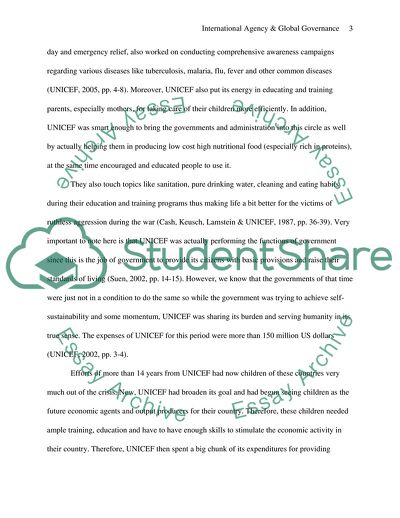Cite this document
(International Agency & Global Governance - UNICEF Case Study, n.d.)
International Agency & Global Governance - UNICEF Case Study. Retrieved from https://studentshare.org/health-sciences-medicine/1733534-discuss-the-work-of-any-one-agency-egwhounicefilo-and-explain-its-contribution-to-global-governance
International Agency & Global Governance - UNICEF Case Study. Retrieved from https://studentshare.org/health-sciences-medicine/1733534-discuss-the-work-of-any-one-agency-egwhounicefilo-and-explain-its-contribution-to-global-governance
(International Agency & Global Governance - UNICEF Case Study)
International Agency & Global Governance - UNICEF Case Study. https://studentshare.org/health-sciences-medicine/1733534-discuss-the-work-of-any-one-agency-egwhounicefilo-and-explain-its-contribution-to-global-governance.
International Agency & Global Governance - UNICEF Case Study. https://studentshare.org/health-sciences-medicine/1733534-discuss-the-work-of-any-one-agency-egwhounicefilo-and-explain-its-contribution-to-global-governance.
“International Agency & Global Governance - UNICEF Case Study”. https://studentshare.org/health-sciences-medicine/1733534-discuss-the-work-of-any-one-agency-egwhounicefilo-and-explain-its-contribution-to-global-governance.


